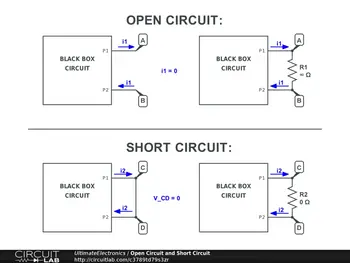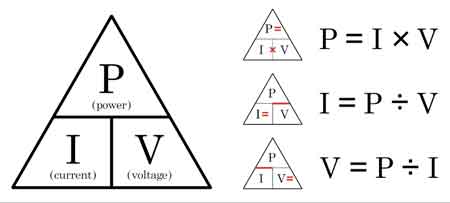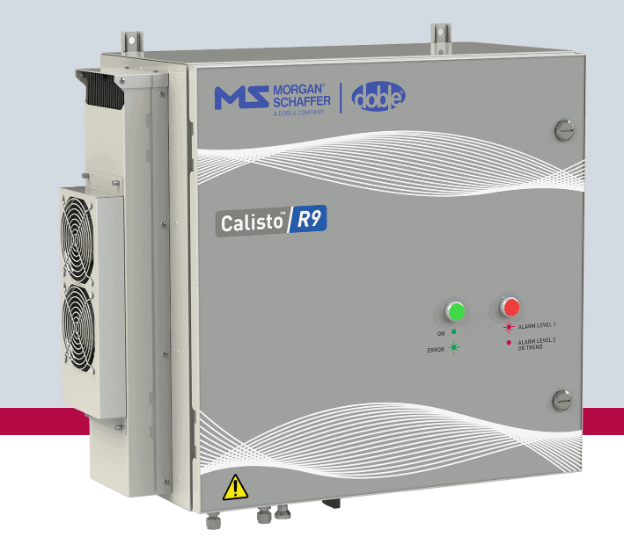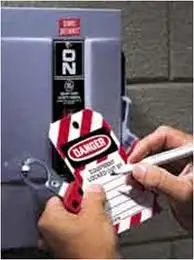What is a Short Circuit

Substation Relay Protection Training
Our customized live online or in‑person group training can be delivered to your staff at your location.

- Live Online
- 12 hours Instructor-led
- Group Training Available
Download Our OSHA 4474 Fact Sheet – Establishing Boundaries Around Arc Flash Hazards

- Understand the difference between arc flash and electric shock boundaries
- Learn who may cross each boundary and under what conditions
- Apply voltage-based rules for safer approach distances
A short circuit occurs when electrical current takes an unintended path of very low resistance, resulting in excessive current flow. This electrical fault can cause overheating, sparks, equipment failure, fire hazards, and power outages, making electrical protection essential in modern systems.
What is a Short Circuit?
A short circuit (SC) is a common electrical issue that occurs when an unintended connection between two points in an electrical system allows excessive current to flow.
✅ A short circuit is an abnormal connection that allows electricity to bypass its intended path.
✅ It happens when conductors touch directly, creating excessive current flow.
✅ Short circuits can result in equipment failure, fire hazards, and system shutdowns.
This dangerous condition can damage electrical devices, create fire hazards, and even lead to electrocution. Understanding the nature of short circuits is crucial for preventing, identifying them early, and taking safe corrective action.
Power System Protection Courses
Short Circuit Study & Protective Device Coordination
Arc Flash Analysis/Study - IEEE 1584 Update
Causes of a Short Circuit
There are many ways a short circuit can develop, but almost all of them involve an unintended electrical path. Insulation failure is one of the most common causes of this issue. When the protective covering around a conductor breaks down due to heat, age, or mechanical damage, it allows electricity to escape and take a new route. Once current finds a low-resistance path, the short circuit occurs.
Another frequent cause is a wiring fault. Loose connections, poorly installed terminals, or damaged receptacles can cause two conductors to come into contact with each other. Environmental conditions, such as water leaks or high humidity, can also compromise insulation and create paths for electricity to flow directly to ground or between phases. Even mechanical issues, such as a nail driven through a wall into a cable or rodent damage to wires, can trigger short circuits in homes and businesses.
Test Your Knowledge About Electrical Protection!
Think you know Electrical Protection? Take our quick, interactive quiz and test your knowledge in minutes.
- Instantly see your results and score
- Identify strengths and areas for improvement
- Challenge yourself on real-world electrical topics
In industrial and utility systems, causes can be even more complex. Overloaded motors, failing transformers, or external conditions like lightning strikes can all lead to sudden short circuits. These situations highlight the importance of designing systems that can withstand not only normal loads but also the unexpected flow of fault current during emergencies. To understand how engineers maintain electrical system safety, explore our electrical protection channel, which covers essential devices and best practices.
Types of Short Circuits
Not all short circuits are identical. Each type has different consequences and requires specific protective measures.
A line-to-line short circuit occurs when two energized conductors in a system come into contact. This often results in a large surge of current that can melt conductors or destroy connected equipment.
A line-to-ground short circuit happens when a live conductor touches a grounded surface or object. Because the earth itself becomes part of the unintended path, this type of electrical fault can be especially dangerous in homes and workplaces.
More severe conditions include symmetrical faults, in which all three phases in a three-phase system are shorted together. These faults are relatively rare but produce the highest levels of current overload, requiring very robust protective devices. In contrast, asymmetrical faults, where only one or two phases are involved, occur more frequently but still require fast-acting protection to minimize damage.
Understanding these types is crucial for engineers who design protection systems, as each type produces different fault current levels and requires careful calculation to ensure that breakers, fuses, and relays operate correctly. One important safeguard against dangerous wiring faults is AFCI protection, which helps prevent electrical fires caused by arc faults. For a deeper insight, see our guide on arc fault circuit interrupter protection devices, which detect and stop arcing conditions.
Testing and Identifying a Short Circuit
Identifying a short circuit early is critical to preventing serious damage. One of the first signs may be flickering lights, frequent tripping of breakers, or blown fuses. Burning smells, discoloured outlets, or unusual warmth around receptacles can also indicate that a wiring fault or unintended electrical path is present.
Electricians use a variety of tools to confirm short circuits. Insulation resistance testing can detect when conductors have degraded coverings that allow leakage to occur. Fault current analysis and relay coordination studies are employed in larger facilities and power systems to predict the likelihood of short circuits and to verify that protective devices will respond correctly. Infrared inspections are another common method, allowing technicians to spot hot spots caused by current overloads before they escalate into fire hazards.
By regularly testing and monitoring electrical systems, faults can often be found before they develop into full short circuits, protecting both equipment and human safety.
Protective Devices and Safety Measures
The best defence against the dangers of a short circuit is a well-designed system of protective devices. Circuit breakers are the most common solution in both residential and industrial systems. They are designed to automatically disconnect power when fault current exceeds safe limits, preventing further damage. Different circuit breaker types are designed to protect against short circuits and overloads in specific applications.
Fuses perform a similar role. When subjected to excessive current, the thin strip of metal inside a fuse melts, breaking the connection and stopping current flow. Although fuses must be replaced once they have operated, they remain a reliable form of short circuit protection in many systems.
Electricity Today T&D Magazine Subscribe for FREE

- Timely insights from industry experts
- Practical solutions T&D engineers
- Free access to every issue
Ground fault circuit interrupters (GFCIs) are specifically designed to protect people by detecting leakage currents to ground, shutting off power before electrocution can occur. Arc-fault circuit interrupters (AFCIs) protect against electrical arcs, a common source of house fires. In industrial systems, more complex devices, such as protective relays and current-limiting fuses, are used to isolate faults and protect transformers, motors, and switchgear.
Together, these devices create multiple layers of safety. When properly coordinated, they ensure that only the smallest possible section of a system is disconnected during a fault, minimizing downtime and preventing large-scale outages.
Real-World Examples of Short Circuits
Short circuits occur everywhere electricity is used. In homes, a common example is when an appliance cord is damaged and the exposed wires come into contact, creating a direct connection between conductors. In such cases, breakers or fuses usually trip immediately, but not before sparks or heat may appear.
In industrial environments, a failing motor winding can create an unintended electrical path, resulting in a massive surge of current. Without properly rated protective devices, this type of electrical fault can destroy equipment worth thousands of dollars.
On the utility level, power lines struck by lightning often create line-to-ground short circuits. The fault current generated can be enormous, sometimes requiring entire sections of the grid to shut down until the protective relays isolate the problem. These examples demonstrate that short circuits are not merely a theoretical issue, but a real-world hazard that affects systems of every size.
Dangers of Short Circuits
The consequences of a short circuit are immediate and severe. The excessive current generates intense heat, which can melt insulation, deform conductors, and ignite surrounding materials. In many cases, electrical fires start because a breaker or fuse was improperly sized or failed to operate quickly enough.
Arc flashes are another danger. When a short circuit creates an arc, the sudden release of electrical energy can cause an explosion, blinding light, or even physical injury. Workers exposed to such events face life-threatening risks, which is why strict safety standards are in place in workplaces.
Electrocution is also a concern. If a short circuit allows current to flow through a person’s body, even brief contact can be fatal. These risks underscore the importance of accurate fault current calculations and the careful installation of protective devices.
Short Circuit vs. Open Circuit
It is important to distinguish between a short circuit and an open path. In a short circuit, the current flows through an unintended path with low resistance, leading to dangerous current overloads. In contrast, an open path occurs when the connection is broken, preventing any current from flowing.
An open route may cause inconvenience, such as a light not turning on, but it does not present the same immediate dangers as a short circuit. By comparison, a short circuit represents a complete failure of the system’s ability to regulate current safely, which is why it demands urgent attention.
Understanding what a short circuit is, along with its causes, types, and dangers, is essential for maintaining safe electrical systems. By using protective devices like breakers, fuses, GFCIs, and AFCIs, and by regularly inspecting and testing wiring, you can reduce the risk of electrical faults that lead to hazardous short circuits. Whether in a home, factory, or power grid, addressing these risks promptly ensures not only the protection of equipment but also the safety of humans. For engineers conducting system studies, our page on short circuit analysis provides an explanation of methods for assessing risks and planning protective measures. A solid understanding of fault current calculation is essential for designing effective short circuit protection systems.
Related Articles












